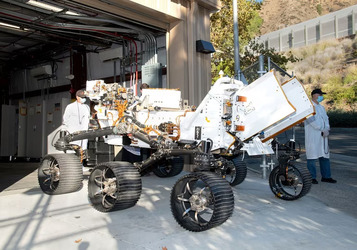The week's pick
Random Articles
Reseach Article
Survey of Topological Insulators 2-3 Dimensional
| Communications on Applied Electronics |
| Foundation of Computer Science (FCS), NY, USA |
| Volume 7 - Number 1 |
| Year of Publication: 2017 |
| Authors: Meri Algarni |
 10.5120/cae2017652582
10.5120/cae2017652582
|
Meri Algarni . Survey of Topological Insulators 2-3 Dimensional. Communications on Applied Electronics. 7, 1 ( May 2017), 11-14. DOI=10.5120/cae2017652582
Abstract
Topological separators are electronic materials that have a mass band crevice like a standard protector, yet have ensured directing states on their edge or surface. These states are conceivable because of the blend of turn circle connections and time inversion symmetry. The 2D topological cover is a quantum turn Hall encasing, which is a nearby cousin of the whole number quantum Hall state. A 3D topological protector bolsters novel turn enraptured 2D Dirac fermions on its surface. In this Colloquium article, we will audit the hypothetical establishment for topological encasings and superconductors and portray late tests in which the marks of topological separators have been watched. We will depict transport probes HgTe/CdTe quantum wells that show the presence of the edge states anticipated for the quantum turn Hall protector. We will then talk about analyses on Bi1−xSbx, Bi2Se3, Bi2Te3 and Sb2Te3 that build up these materials as 3D topological separators and specifically test the topology of their surface states. We will then depict extraordinary states that can happen at the surface of a 3D topological encasing because of an initiated vitality crevice. An attractive crevice prompts a novel quantum Hall express that offers ascend to a topological magnetoelectric impact. A superconducting vitality hole prompts an express that backings Majorana fermions, and may give another setting to acknowledging proposition for topological quantum calculation. We will close by examining prospects for watching these outlandish states and also other potential gadget utilizations of topological protectors
References
- Haldane, F. D. M., 1988, Phys. Rev. Lett. 61, 2015.
- Qi, X. L., R. Li, J. Zang and S. C. Zhang, 2009, Science 323, 1184.
- Levin, M. and A. Stern, 2009, Phys. Rev. Lett. 103, 196803.
- Pesin, D. A., and L. Balents, 2010, Nat. Phys. 6, 376.
- Fradkin E., E. Dagotto, and D. Boyanovsky, 1986, Phys. Rev. Lett. 57, 2967.
- Ivanov, D. A., 2001, Phys. Rev. Lett. 86, 268.
- Jackiw, R., and P. Rossi, 1981, Nucl. Phys. B, 190 681.
- Park, S. R., W. S. Jung, C. Kim, D. J. Song, C. Kim, S. Kimura, K. D. Lee and N. Hur, 2010, Phys. Rev. B 81, 041405(R).
- Read, N. and D. Green, 2000, Phys. Rev. B 61, 10267.
- Bernevig, B. A., T. A. Hughes, and S. C. Zhang, 2006, Science 314, 1757.
- Das Sarma, S., C. Nayak, and S. Tewari, 2006, Phys. Rev. B 73, 220502(R).
- Dolev, M., M. Heiblum, V. Umansky, A. Stern, and D. Mahalu, 2008, Nature 452, 829.
Index Terms
Keywords

